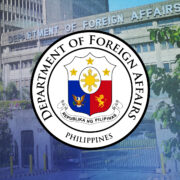Going bananas

The other weekend, I went to visit an old friend’s organic farm with my brother Bong, a civil engineer who, like many retirees, has gone into farming. After showing us around his farm, our gracious host Philip treated us to a delicious snack of grilled cheese on toasted sourdough bread. The sharp burnt cheese made me crave for a glass of rosé, but it was mid-morning, and we were in Botolan, Zambales, not Provence.
Sensing that I was looking for some fruits, Bong quietly pulled out of his bag a sealed plastic packet of what looked like dried dilis (local anchovies). What are these? I asked. “Sun-dried saging na saba (a plantain variety indigenous to the Philippines). Try it, you may like it,” he said.I have long been an avid consumer of Cebu’s dried mangoes. On long motorcycle rides, I would snack on them during quick stops for an instant sugar fix. But it never crossed my mind that anyone would think of dehydrating bananas. If you dry the saba, Bong explained, the result would be a light delicious snack that contains all the potassium and other nutrients you’re looking for in a fresh banana, but with less sugar and more fiber.
True enough, the uncooked dried saba he offered us that morning was chewy like dried mango but not as sticky. Its mild sweetness was balanced by a hint of sourness that one finds in dried apricots. These ones were made from underripe saba, and so retained a bit of the starchy consistency of a green banana.
My taste buds instantly recognized the unique texture of the saba. Of course, this is the same fruit that, lightly coated in caramelized brown sugar, is sold as fried “bananacue” along the streets of the University of the Philippines (UP) Diliman campus. Cheap, always freshly cooked, and filling, this iconic snack antedates UP’s equally famous fried fishballs. These two snacks have enabled generations of “iskolar ng bayan” to survive the rigors of UP student life on a tight budget.
The advantage of the dried raw saba is that it’s less bulky and less messy to eat. Plus, it obviously contains far less sugar than the muscovado-laced bananacue. “This is a complete poor man’s meal,” Bong tells me, and—I added—definitely far more nutritious than the fish crackers that delivery truck and jeepney drivers consume while stuck in traffic.
But I had doubts whether people would buy these—the shriveled saba strips didn’t look particularly appetizing at first glance. The packaging could stand improvement, Bong assures me; “It’s the drying process that’s a bit problematic.” Sun-drying is best because you don’t pay for the heat, but it takes a long time, and fruit always attracts flies and other insects, which can pose sanitary problems. I’ve long wondered what drying technology Thailand’s food producers use, because, like the Japanese, they seem capable of desiccating nearly all kinds of fruits, vegetables, and fish.
Coming home from that farm visit, I found my granddaughter Julia eyeing a big box of a famous brand of healthy foods that was sent to me as a Christmas present. Let’s open it, I said. Her eyes widened at what she saw inside: a big pile of imported snacks in their shiny multicolored packages. A big bag of popcorn carried these feel-good messages: “selfless snacking,” “non-GMO verified,” “women-owned,” “certified vegan,” and a personal assurance that “a portion of the proceeds shall benefit hunger-relief efforts.” Reading these, I wondered if they were selling popcorn or a new religion.
A box of crackers made the following claims for its contents—“organic and vegan,” “heart-healthy,” “sustainably sourced,” “certified carbon negative,” “recyclable carton,” “climate-friendly,” and “all-natural ingredients.” Another item—a packet of “gluten-free” and “organic and vegan” cereal flakes—offered this Pollyannish view of the origins of the principal ingredients: “water, wind, soil, and sun nurture the crops … and wonderful bees pollinate them.” The stress on sustainable and nature-friendly processes is emblazoned everywhere on the packaging of these products, thereby suggesting that these snacks may justifiably cost more because of the cause or causes they serve. My mind drifted back to the humble saba. For here is a perfect example of an inexpensive and versatile local fruit that has not merited the attention of GMO companies, is grown sustainably in small backyard farms, and supplements the meager meals of poor families. Boiled, grilled, fried, or used as a vegetable extender in all kinds of stews, the saba, when dried, is superior in its nutrient and fiber content to any imported processed snack I have seen in the high-end snack market.
Many years ago, I met the amazing Ela Bhatt, an Indian trade union organizer and Mahatma Gandhi follower, who proposed the idea of the “100-mile community.” Her thesis is that if the six basic needs in life—food, clothing, shelter, health, education, and banking—were mainly sourced locally (meaning, within a 100-mile radius), people would be compelled to come up with creative solutions to poverty, exploitation, and ecological degradation. “By importing food,” she said, “we cannot solve the problem of food security … Buying locally will increase employment, provide lower prices, and empower people.” This didn’t strike me at all as a recipe for a banana republic.Merry Christmas to one and all!
—————–public.lives@gmail.com
















